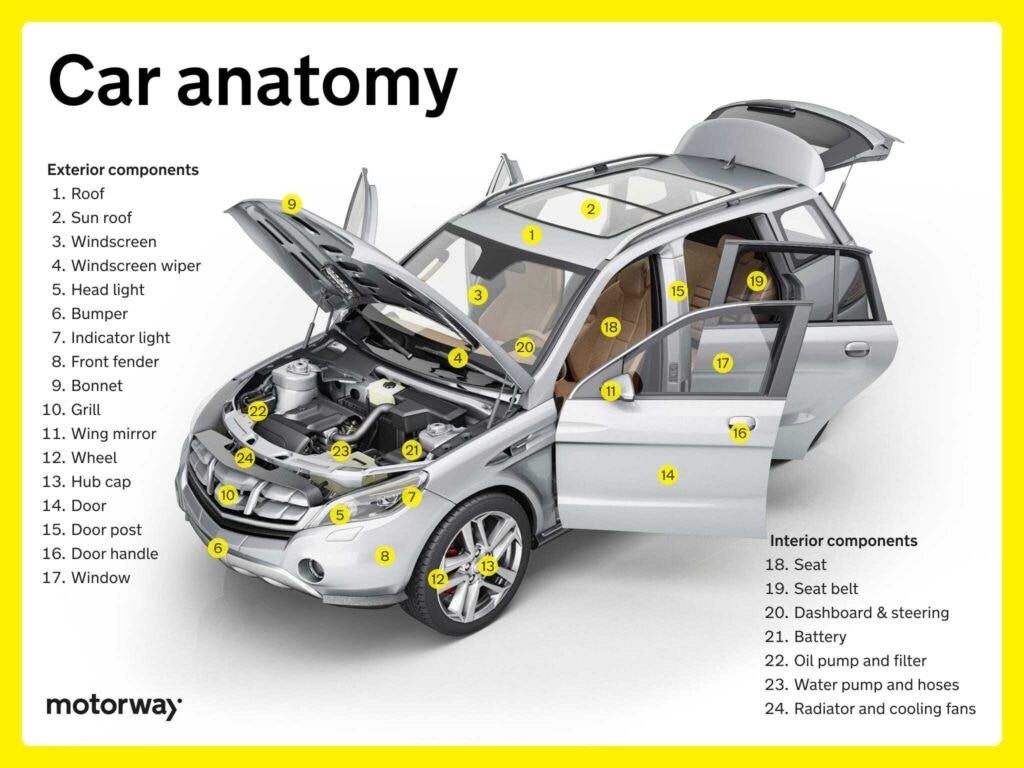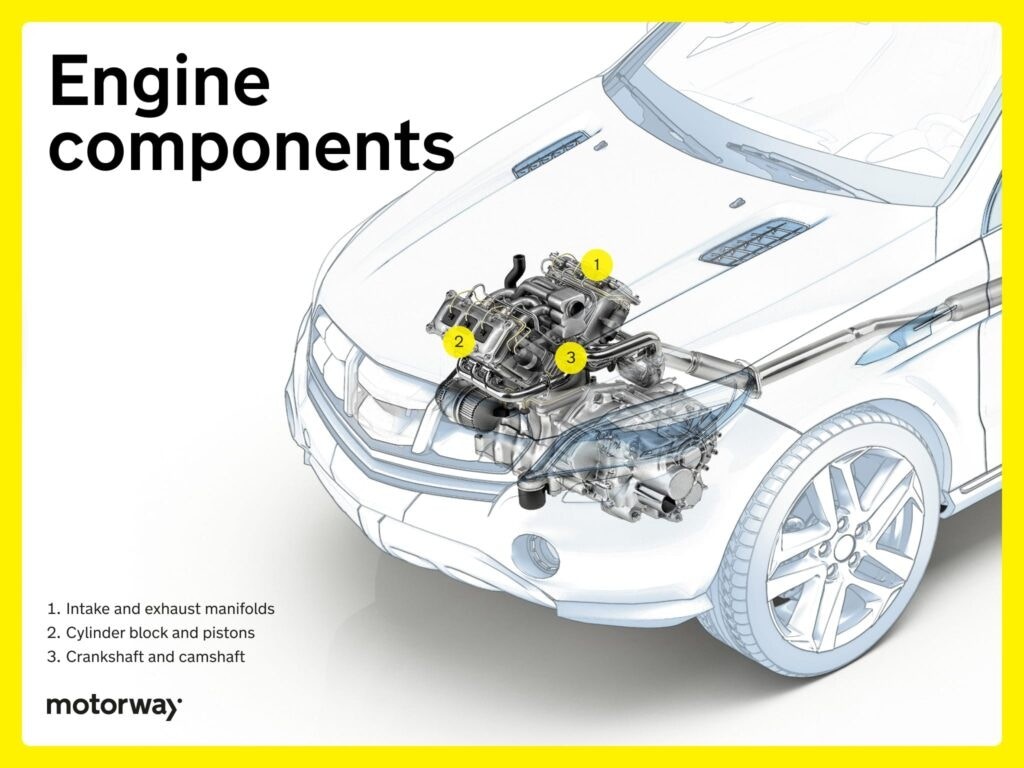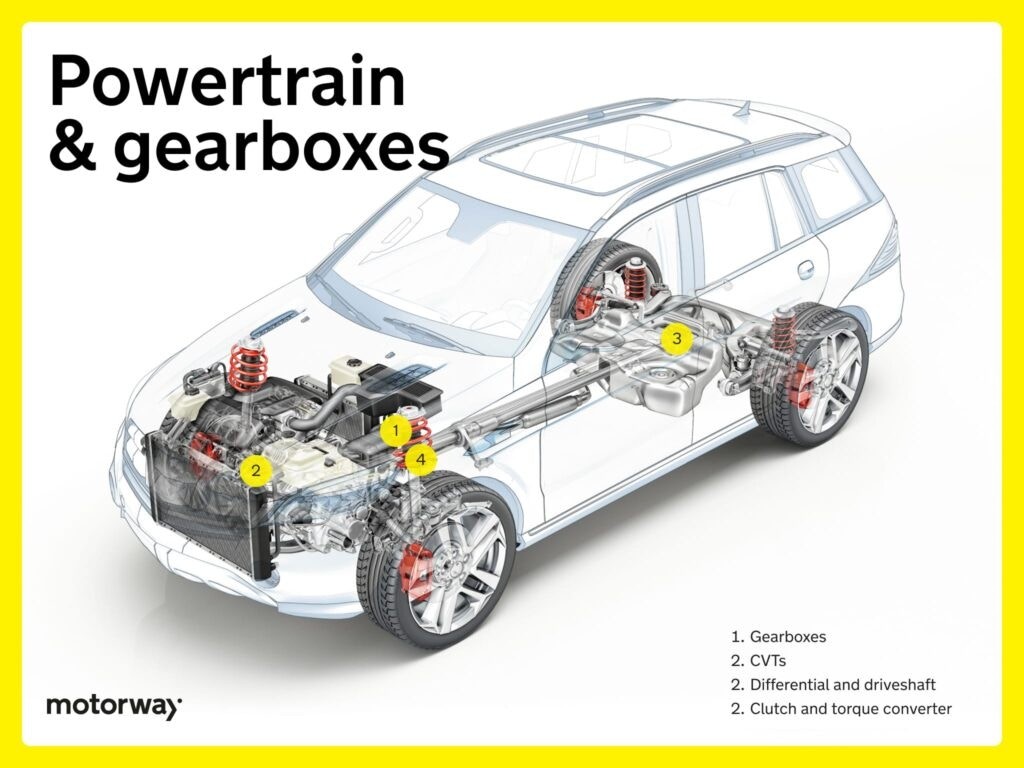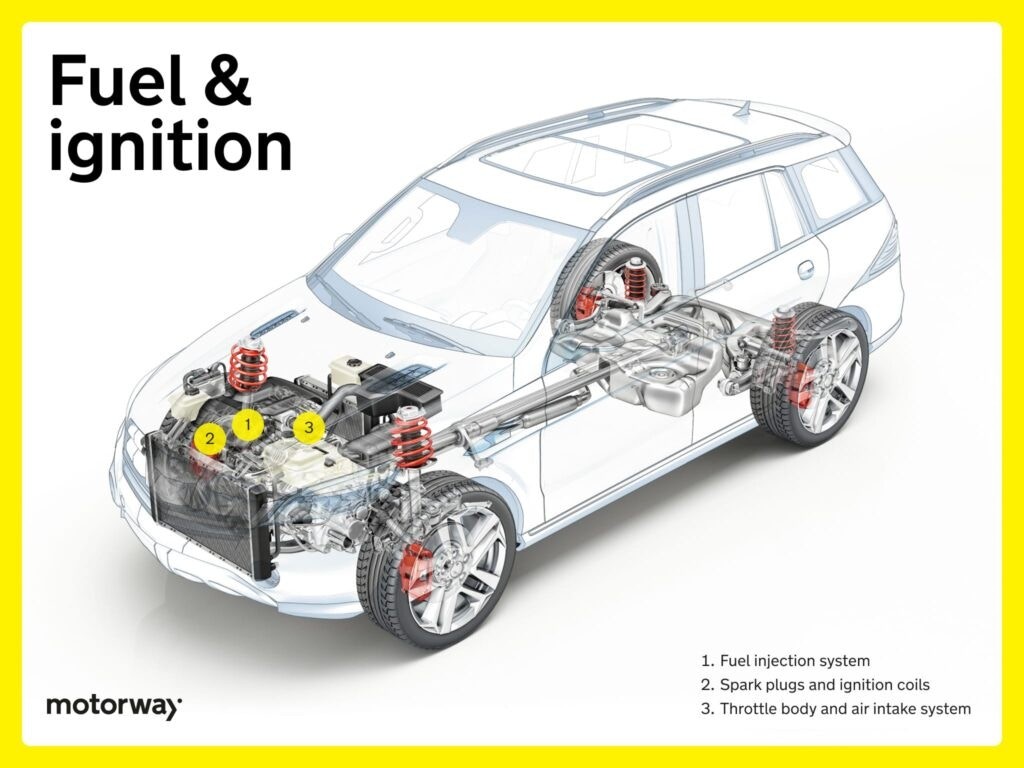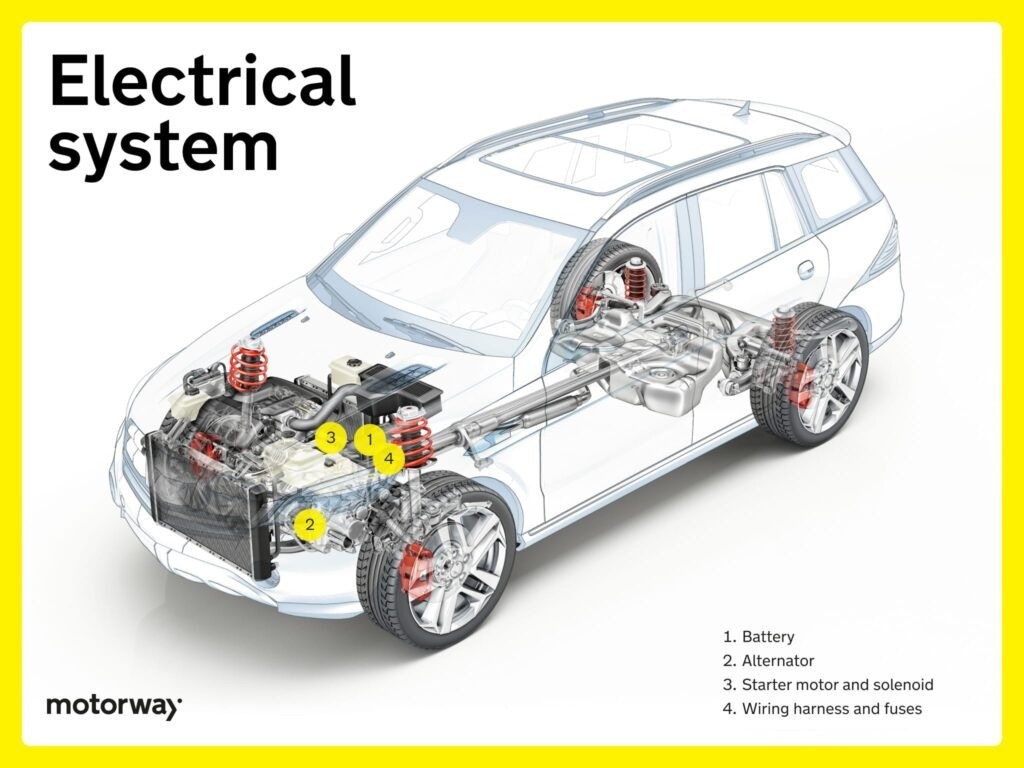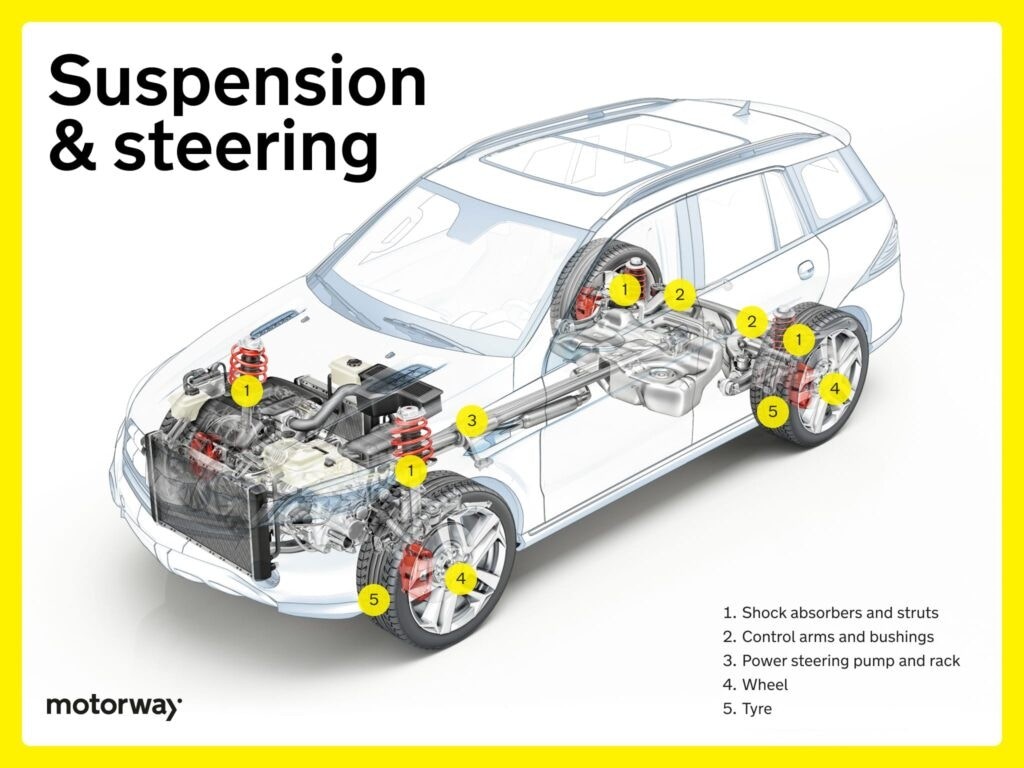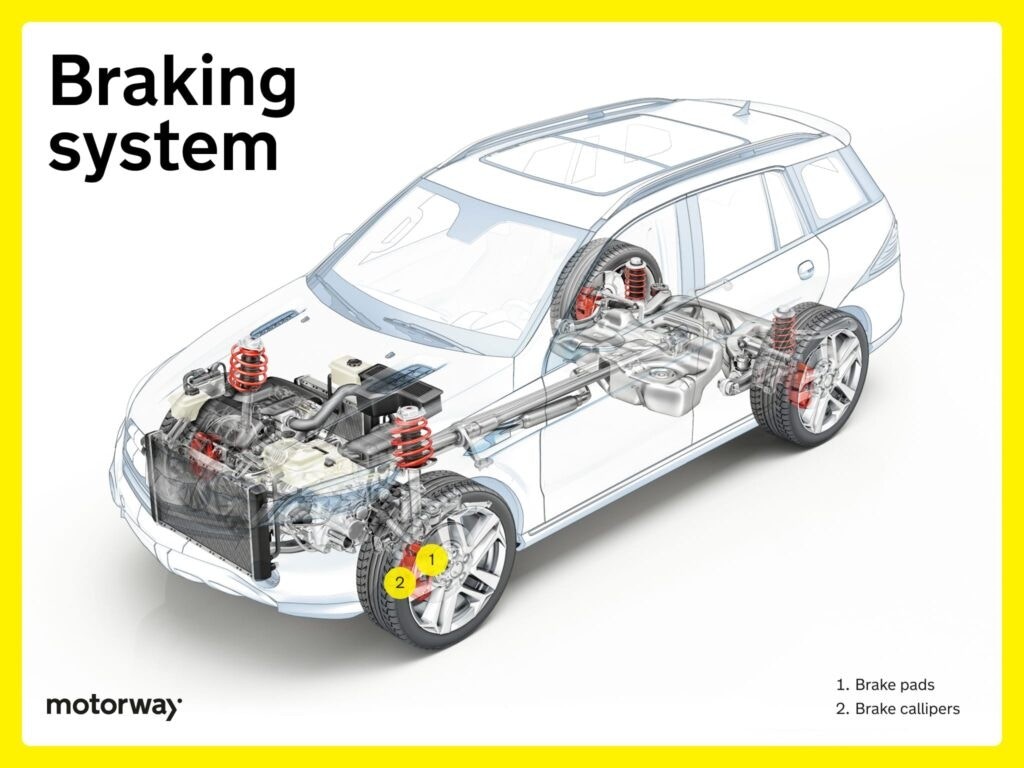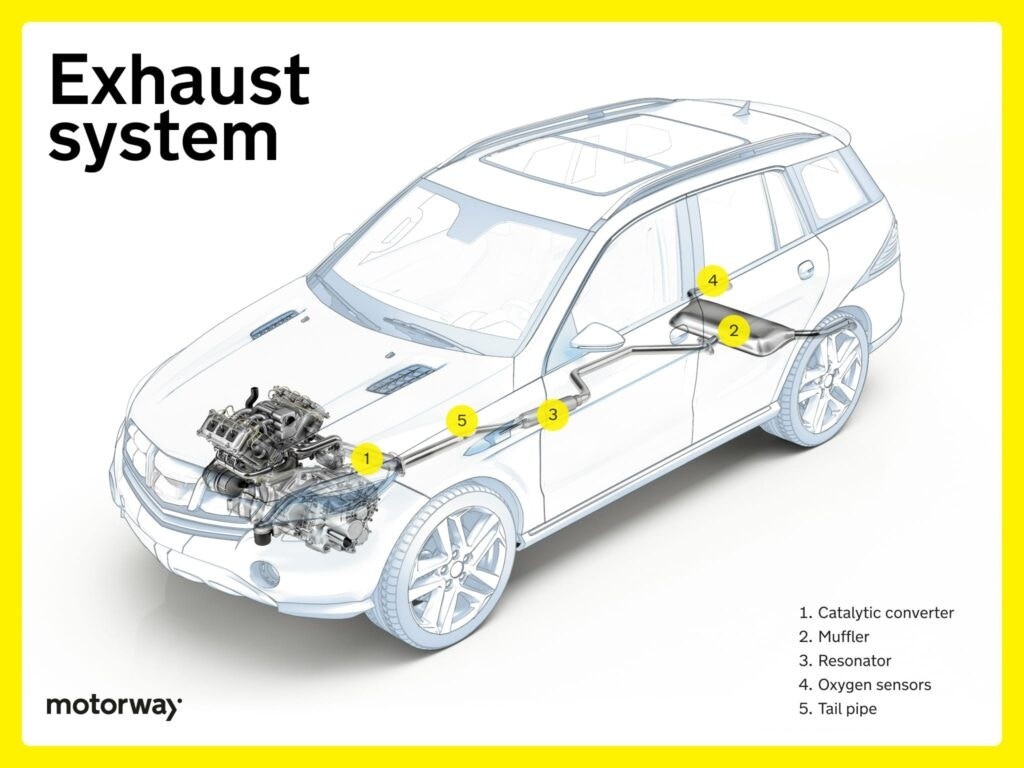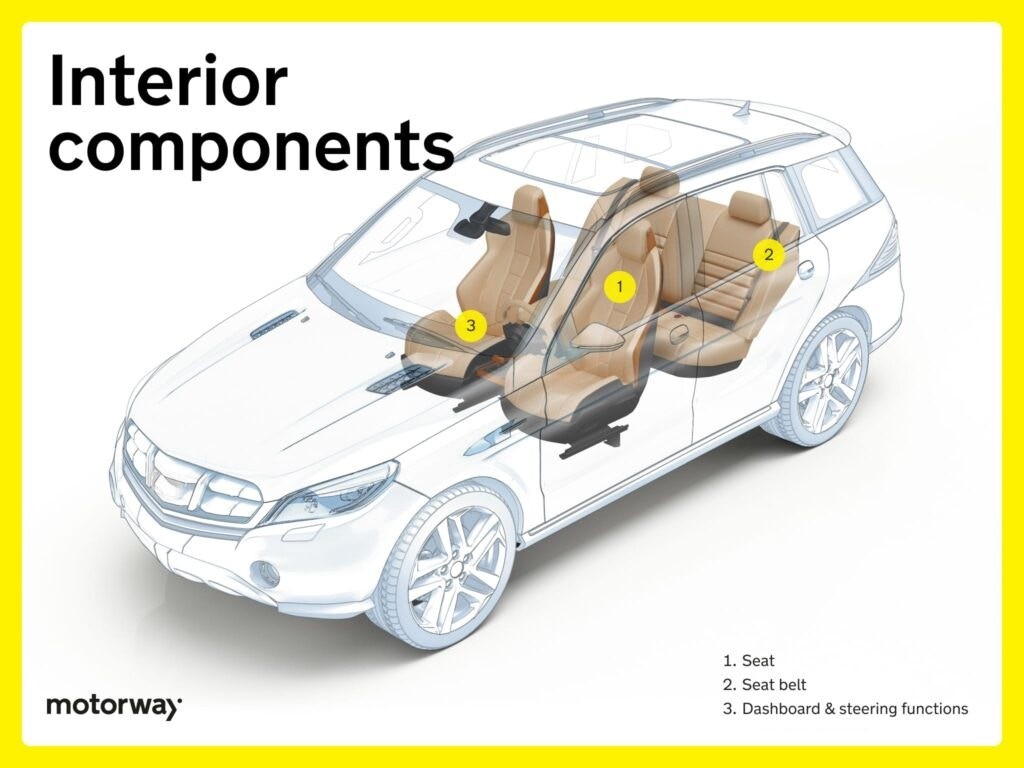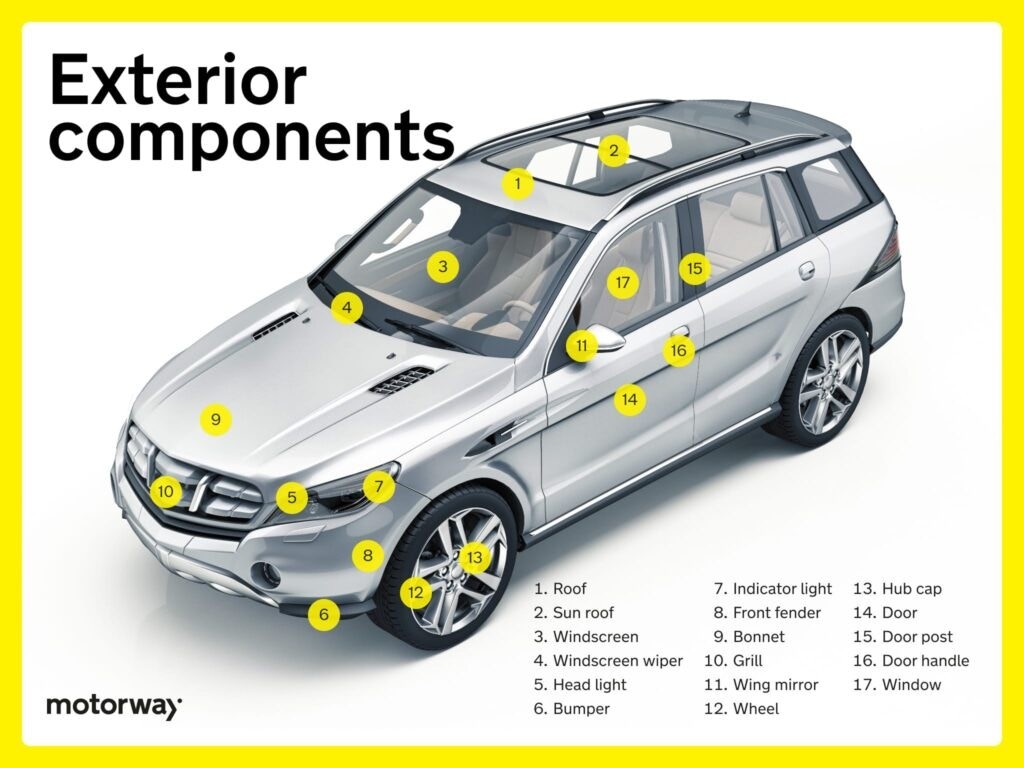Being a responsible car owner goes beyond just driving; it involves understanding the intricate mechanics that keep your vehicle running smoothly. It might seem daunting to learn about all the essential mechanical parts of cars, but this knowledge empowers you to make informed decisions when maintenance or repairs are needed. Knowing your car inside and out helps you identify potential issues early, understand repair costs, and ultimately, keep your vehicle in top condition. Let’s dive into the anatomy of a car, exploring its key components from the engine’s pistons to the wheels on the road.
Understanding the various systems and components of your car is essential for proactive maintenance and cost-effective vehicle ownership.
Delving into Engine Components
The engine is undeniably the heart of any car, and understanding its components is crucial for any car owner. A well-maintained engine ensures your car’s longevity, performance, and fuel efficiency. Let’s break down the key engine components that work together to generate power.
Maintaining your engine in optimal condition is vital for preserving your car’s value and minimizing running expenses.
Cylinder Block and Pistons: The Powerhouse
The cylinder block is the foundational structure within the engine, acting as its robust backbone. It houses the cylinders, which are precisely engineered hollow tubes where the magic of controlled combustion takes place.
Within these cylinders, pistons move up and down, sealed by piston rings. Pistons are the workhorses, converting the explosive energy from fuel combustion into mechanical force that propels your vehicle forward. The interaction between pistons and cylinders is the core of power generation in your car’s engine.
Crankshaft and Camshaft: Orchestrating Motion and Timing
Deep within the engine’s workings are the crankshaft and camshaft, vital for coordinated operation. The crankshaft’s role is to transform the linear, up-and-down motion of the pistons into rotational energy, providing the driving force that moves the wheels.
Simultaneously, the camshaft ensures precise timing for the engine valves to open and close, synchronizing air intake and exhaust release for optimal combustion. Working in harmony, the crankshaft and camshaft orchestrate the internal combustion process, resulting in the smooth and powerful motion of your car.
Intake and Exhaust Manifolds: The Breathing System
Think of intake and exhaust manifolds as the lungs of your car, managing the critical flow of air. The intake manifold draws in fresh air, essential for the combustion process within the engine cylinders. Conversely, the exhaust manifold is responsible for expelling spent gases after combustion, directing them out through the exhaust system.
Together, these manifolds optimize the engine’s breathing, ensuring a balanced and efficient combustion process that maximizes power and minimizes emissions. It’s worth noting that electric vehicles do not have intake and exhaust manifolds as they operate without internal combustion engines.
Exploring Powertrain and Gearboxes
The powertrain is the system that transmits the engine’s power to the wheels, enabling movement. Gearboxes, also known as transmissions, are a critical part of this system, allowing for varying speed and power ratios. Let’s explore the different types of gearboxes and related components.
The gearbox, especially in manual cars, is a crucial component requiring smooth operation and careful maintenance.
Understanding Different Types of Gearboxes (Transmissions)
Manual Gearboxes: Driver Control
Manual gearboxes put the driver in command of gear selection, offering a more engaged driving experience. These transmissions require the driver to manually engage and disengage gears using a clutch pedal and gear stick.
This manual control allows drivers to adapt to diverse driving conditions, such as slippery roads, acceleration needs, and deceleration scenarios, providing a direct connection to the vehicle’s performance.
Automatic Gearboxes: Effortless Shifting
Automatic gearboxes prioritize driving ease by automatically shifting gears, eliminating the need for driver intervention. These systems handle gear changes seamlessly without the driver operating a clutch or gear stick.
At the heart of automatic gearboxes is a torque converter, a fluid coupling mechanism that ensures smooth and almost imperceptible gear transitions, enhancing driving comfort and convenience.
Continuously Variable Transmissions (CVTs): Seamless Acceleration
Continuously Variable Transmissions (CVTs) represent the pinnacle of gearbox technology, offering unparalleled smoothness. Utilizing a system of pulleys and belts, CVTs provide an infinite spectrum of gear ratios, resulting in seamless and continuous acceleration.
This innovative design not only maximizes fuel efficiency by keeping the engine in its optimal power band but also dynamically adapts to changing driving conditions, making CVTs a sophisticated and fuel-conscious choice.
Differential and Driveshaft: Distributing Power to the Wheels
Within the powertrain, the differential and driveshaft play distinct yet interconnected roles. The driveshaft acts as the conduit, transferring power generated by the transmission to the wheels.
The differential’s crucial function is to distribute power evenly to the wheels, particularly when turning. This ensures that the outer wheels can rotate faster than the inner wheels during a turn, preventing wheel slippage and maintaining smooth cornering. Together, the driveshaft and differential create a balanced system for effective vehicle motion.
Clutch and Torque Converter: Engaging and Transferring Power
In the realm of gearboxes and power transmission, the clutch and torque converter are key components. In manual transmissions, the clutch allows the driver to precisely engage and disengage the engine from the gearbox, providing control over gear changes.
Conversely, in automatic transmissions, the torque converter smoothly transfers engine power to the transmission through fluid dynamics, ensuring seamless gear shifts and a dynamic driving experience.
Fuel and Ignition Systems: Powering Combustion
The fuel and ignition systems are essential for initiating and maintaining the combustion process in an internal combustion engine. These systems work in concert to deliver fuel and spark, creating the power that drives your car.
A properly functioning fuel system is absolutely critical for your internal combustion engine car to prevent dangerous breakdowns.
Fuel Injection System: Precise Fuel Delivery
The fuel injection system is a cornerstone of modern engines, ensuring optimal combustion and efficiency. Fuel injectors are precision nozzles that spray a fine mist of fuel directly into the engine cylinders. This precise fuel delivery enhances engine performance, improves fuel economy, and reduces emissions compared to older carburettor systems.
Fuel injection systems have largely replaced carburettors, which were prone to clogging and less efficient fuel delivery. Fuel injectors offer superior fuel distribution, resulting in enhanced power, better fuel efficiency, and lower emissions.
Spark Plugs and Ignition Coils: Initiating Combustion
The ignition system is composed of spark plugs and ignition coils, working in tandem to ignite the air-fuel mixture within the engine cylinders. Spark plugs generate the high-voltage spark needed for combustion, while ignition coils amplify the voltage from the car’s electrical system to create this spark.
The synchronized operation of spark plugs and ignition coils is vital for efficient and rapid ignition, crucial for optimal engine performance, responsiveness, and fuel efficiency. Regular maintenance of these components is key to a healthy engine.
Throttle Body and Air Intake System: Controlling Airflow
The throttle body and air intake system collaborate to regulate the amount of air entering the engine. The throttle body acts like a valve, controlling the volume of air that flows into the engine based on the driver’s accelerator pedal input. The air intake system ensures that the engine receives a clean and unrestricted supply of air, filtering out contaminants.
Working together, the throttle body and air intake system manage the engine’s “breathing,” a critical factor in achieving peak power, fuel efficiency, and overall engine performance.
Cooling and Lubrication Systems: Maintaining Optimal Temperature and Smooth Operation
To prevent engine damage from heat and friction, cars rely on cooling and lubrication systems. These systems are vital for maintaining engine health and longevity.
Radiator and Cooling Fans: Preventing Overheating
The radiator and cooling fans are primary components in safeguarding the engine from overheating. The radiator functions to dissipate heat from the engine coolant as it circulates through the engine. Cooling fans enhance airflow through the radiator, especially when the car is stationary or moving slowly, maximizing heat expulsion.
Together, the radiator and cooling fans ensure the engine operates at an optimal temperature, preventing damage from excessive heat and promoting efficient performance.
Water Pump and Hoses: Coolant Circulation
The water pump and hoses are integral to the engine’s cooling system, ensuring continuous coolant circulation. The water pump is responsible for forcing coolant through the engine block and radiator, absorbing heat as it circulates. Hoses act as pathways, allowing the coolant to travel between the engine, radiator, and other cooling system components.
This continuous circulation of coolant, driven by the water pump and guided by hoses, is essential for effective engine temperature regulation.
EV Battery Cooler System: Thermal Management for Electric Vehicles
Electric vehicles (EVs) employ a specialized cooling system designed to manage the temperature of the battery pack and electric motor. The battery cooler, analogous to a traditional radiator, dissipates heat from the battery coolant. Cooling systems in EVs also enhance airflow around the battery and motor, expelling excess heat.
Maintaining optimal temperature in EVs is crucial for the longevity, efficiency, and performance of the battery and electric motor. Overheating can significantly degrade battery life and performance.
Oil Pump and Oil Filter: Lubrication and Filtration
The oil pump and oil filter are crucial for engine lubrication and cleanliness. The oil pump circulates engine oil throughout the engine, ensuring that critical components are constantly lubricated, reducing friction and wear. Simultaneously, the oil filter removes impurities, debris, and contaminants from the oil, maintaining its cleanliness and effectiveness.
Working in tandem, the oil pump and oil filter extend engine life by minimizing wear and ensuring smooth and efficient operation of internal parts. Regular oil changes and filter replacements are vital for maintaining engine health.
Electrical System: Powering Car Functions
The electrical system is the nervous system of your car, powering everything from the engine ignition to the headlights and infotainment system. Understanding the key components of the electrical system is essential for diagnosing and resolving electrical issues.
The electrical system is fundamental to almost every function in your car, from starting the engine to running accessories.
Battery: The Initial Power Source
The car battery is the primary electrical energy storage device in a vehicle. It provides the initial surge of power needed to start the engine and supplies power to electrical components when the engine is not running. All cars, including EVs (which also have high-voltage batteries for the electric motor), rely on a 12V battery for auxiliary systems. Battery faults or reduced capacity can lead to starting problems and electrical system malfunctions.
Alternator: Recharging and Power Supply
The alternator is an electrical generator driven by the engine. It converts mechanical energy from the engine’s rotation into electrical energy. The alternator’s primary function is to recharge the battery while the engine is running and to supply power to the car’s electrical system, including lights, accessories, and engine management systems.
Crucially, the alternator regulates the voltage output to maintain a consistent electrical supply, preventing battery overcharging and ensuring that electrical components receive the correct voltage.
Starter Motor and Solenoid: Initiating Engine Start
The starter motor and solenoid work together to crank the engine and initiate the combustion process. The solenoid is an electromagnetic switch that activates the high-current starter motor when the ignition key is turned. The starter motor then engages with the engine’s flywheel, turning the crankshaft and starting the engine.
This coordinated action of the starter motor and solenoid transforms electrical energy from the battery into mechanical motion, getting the engine running.
Wiring Harness and Fuses: Electrical Distribution and Protection
The wiring harness is a network of wires that distributes electricity throughout the vehicle, connecting various electrical components. Fuses are safety devices strategically placed within the wiring harness to protect circuits from overloads. If excessive current flows through a circuit, the fuse blows, interrupting the circuit and preventing damage to components.
Together, the wiring harness and fuses ensure a safe and organized flow of electrical power, preventing potential malfunctions and safeguarding the entire electrical network.
Suspension and Steering Systems: Ensuring Ride Comfort and Control
The suspension and steering systems are critical for vehicle handling, stability, and ride comfort. These systems allow the car to navigate uneven road surfaces and provide the driver with precise control.
Achieving smooth handling and maneuverability requires a complex power steering system with numerous sensitive components.
Shock Absorbers and Struts: Damping Vibrations and Providing Stability
Shock absorbers and struts are fundamental components of the suspension system, responsible for controlling vehicle movement and absorbing road shocks. Shock absorbers, typically located at each wheel, dampen oscillations and vibrations, smoothing out the ride by controlling spring and suspension movement.
Struts, often found in front and sometimes rear suspensions, combine the functions of shock absorbers and structural support, contributing to overall vehicle stability and handling. Together, they enhance driving comfort by minimizing the impact of bumps and uneven surfaces.
Control Arms and Bushings: Connecting and Cushioning
Control arms and bushings are crucial for chassis stability and smooth handling. Control arms are hinged suspension links that connect the wheel hubs to the vehicle’s frame or body. Bushings, made of rubber or polyurethane, are inserted at the connection points of control arms to provide flexibility and absorb vibrations.
This combination absorbs road imperfections, maintains proper wheel alignment, and ensures a balanced and comfortable ride.
Power Steering Pump and Rack: Effortless Steering
The power steering pump and rack are essential for responsive and effortless steering. The power steering pump, driven by the engine, generates hydraulic pressure. The steering rack converts this hydraulic pressure into linear motion, assisting the driver in turning the wheels.
Together, the power steering pump and rack provide precise and smooth maneuverability, making steering easier, especially at low speeds and during parking.
Braking System: Ensuring Safety and Control
The braking system is arguably the most critical safety system in a car. It allows the driver to slow down or stop the vehicle safely and effectively.
The braking system is a highly refined area of your vehicle, rigorously tested annually to ensure road safety.
Brake Pads: Creating Friction for Deceleration
Brake pads are friction materials that press against the brake rotors to slow down or stop the vehicle. Typically made of composite materials, brake pads convert kinetic energy into heat through friction when the brake pedal is applied.
Their robust design ensures reliable braking performance, contributing significantly to safety. Brake pads are subject to wear over time and require periodic replacement, especially with frequent or aggressive braking.
Brake Calipers: Applying Pressure to Brake Pads
Brake calipers are positioned around the brake rotors and house pistons. When hydraulic pressure from the brake system is applied, these pistons clamp the brake pads against the rotor. This clamping action generates the friction needed for controlled deceleration.
The precision of brake calipers ensures responsive and reliable braking, contributing directly to overall driving safety.
Exhaust System: Managing Emissions and Noise
The exhaust system is responsible for safely channeling and treating exhaust gases produced by the engine, reducing emissions and noise.
Maintaining your exhaust system is crucial for clean operation and minimizing pollutant emissions.
Catalytic Converter: Reducing Harmful Emissions
The catalytic converter is a key component in reducing harmful emissions from internal combustion engines. It uses chemical catalysis to convert pollutants like carbon monoxide, hydrocarbons, and nitrogen oxides into less harmful substances such as carbon dioxide, water, and nitrogen.
This device significantly reduces vehicle emissions, contributing to cleaner air and environmental protection. It’s a vital component for meeting emissions regulations.
Muffler and Resonator: Quieting Exhaust Noise
The muffler and resonator work together to control and reduce exhaust noise. The muffler’s primary function is to dampen and reduce engine noise, making the vehicle quieter. The resonator fine-tunes sound frequencies, further reducing noise and shaping the exhaust note.
By reducing noise levels, the muffler and resonator contribute to a more comfortable driving experience and help meet noise regulations.
Oxygen Sensors: Monitoring Exhaust Gases
Oxygen sensors are located in the exhaust system, monitoring the oxygen levels in the exhaust gases. This data is sent to the engine control unit (ECU), which uses it to optimize fuel injection and air-fuel mixture.
By providing real-time feedback on exhaust gas composition, oxygen sensors enable precise fuel control, improving combustion efficiency and reducing emissions.
Interior Components: Comfort and Convenience
Interior components contribute to the comfort, convenience, and safety of the vehicle’s occupants.
Maintaining the interior components of your car can significantly impact its resale value, as the interior contributes to the overall feeling of vehicle quality.
Seats & Seat Belts: Occupant Safety and Support
Car seats are designed for comfort and support, available in various materials and configurations to suit different needs and preferences. Seat belts are essential safety devices, securing occupants in their seats during a collision or sudden stop. Modern seat belts often include pretensioners that tighten the belt in an impact and force limiters to reduce chest injury.
Dashboard & Steering Functions: Driver Information and Control
The dashboard serves as the driver’s command center, displaying essential information such as speed, fuel level, engine temperature, and warning lights. It provides a comprehensive overview of the vehicle’s operating status.
The steering wheel integrates various controls beyond steering, including controls for indicators, wipers, headlights, and often multimedia and cruise control functions, placing essential vehicle operations within easy reach of the driver.
Exterior Components: Aesthetics and Protection
Exterior components define the car’s appearance and provide protection from the elements and minor impacts.
Addressing minor exterior imperfections before selling your car can be cost-effective to maximize its resale value.
Door Features & Controls: Convenience and Security
Door features and controls enhance convenience and safety for vehicle occupants. Standard features include electric window controls, door locks (manual or power), and mirror adjustments.
Many modern vehicles also incorporate advanced features like keyless entry systems, power-operated doors and trunk lids, and integrated security systems, contributing to a more user-friendly and secure driving experience.
Wheels and Tyres: Contact with the Road
Wheels and tyres are the vehicle’s point of contact with the road, crucial for traction, handling, and ride comfort.
Types of Tyres and Their Functions
| Type of tyre | Function |
|---|---|
| Summer tyres | Designed for warm weather, providing excellent grip and handling in both dry and wet conditions. |
| Winter tyres | Engineered for cold temperatures, featuring specialized tread patterns for superior traction on snow and ice. |
| All-season tyres | Versatile tyres offering a balance of performance in various conditions, suitable for moderate climates. |
| Performance tyres | Optimized for sporty driving, prioritizing enhanced handling, grip, and responsiveness at high speeds. |
| Off-Road tyres | Built for rugged terrains, featuring aggressive tread patterns and reinforced sidewalls for maximum traction and durability off-road. |
| Run-flat tyres | Designed with reinforced sidewalls, allowing continued driving at reduced speeds for a limited distance after a puncture. |
| Touring tyres | Focused on comfort and a quiet ride, ideal for long journeys with low road noise and good handling characteristics. |
Wheel Construction Guide: Alloy vs. Steel Wheels
Wheel construction varies, affecting weight, strength, and aesthetics:
- One-piece construction: Made from a single piece of material, common for both alloy and steel wheels, offering simplicity and durability.
- Two-piece construction: Composed of a center and outer rim, typically bolted or welded, often found in performance and custom wheels for styling and strength.
- Three-piece construction: Modular design with a center, outer rim, and inner hoop, allowing for extensive customization, popular in aftermarket and high-performance applications.
- Forged construction: Made from compressed metal, resulting in wheels that are stronger and lighter than cast wheels, favored in racing and high-performance vehicles.
- Multi-piece construction: Combines multiple components for versatility in sizing and design, offering customization options.
Material choice also impacts wheel characteristics:
- Alloy wheels: Made from aluminum or magnesium alloys, lightweight for improved handling and heat dissipation, enhancing vehicle appearance.
- Steel wheels: Constructed from steel for robustness and durability, more cost-effective and suitable for rugged conditions, though heavier than alloy wheels.
Tyre Pressure Monitoring System (TPMS): Ensuring Correct Inflation
The Tyre Pressure Monitoring System (TPMS) is a safety feature that continuously monitors the air pressure in each tyre. Sensors in each wheel transmit real-time pressure data to the vehicle’s computer. If tyre pressure drops below a safe level, TPMS alerts the driver, promoting safety, fuel efficiency, and extended tyre life by ensuring proper inflation.
FAQs About Car Parts
What parts are located under a car?
Beneath a car, you’ll find essential systems like the engine, transmission, suspension system, exhaust system, and fuel system. These components are strategically positioned under the vehicle’s body for protection and optimal weight distribution.
How many parts are there in a car?
The number of parts in a modern car can exceed 30,000, encompassing a vast array of systems and components. This complexity highlights the intricate engineering involved in vehicle design and manufacturing. Electric vehicles generally have fewer parts due to simpler powertrains.
What are the most critical parts of a vehicle?
Key vehicle parts include the engine, transmission, braking system, steering system, suspension, and electrical system. Each of these plays a vital role in ensuring the vehicle’s safe and reliable operation.
Which car parts can be sold individually?
Individual car parts such as engines, transmissions, body panels, and specific electrical components can be sold separately in the aftermarket. The demand and availability of these parts depend on vehicle models and market needs.
What causes car part shortages?
Shortages in car parts can arise from various factors, including disruptions in the global supply chain, increased demand for specific components, manufacturing bottlenecks, and unforeseen global events that impact production and logistics.
Ready to Learn More About Car Maintenance?
Expanding your knowledge about car parts is the first step to becoming a more informed and proactive car owner. Understanding these components will help you keep your vehicle running smoothly and address maintenance needs effectively. Explore more resources on car maintenance and diagnostics at cardiagxpert.com to enhance your automotive expertise.
